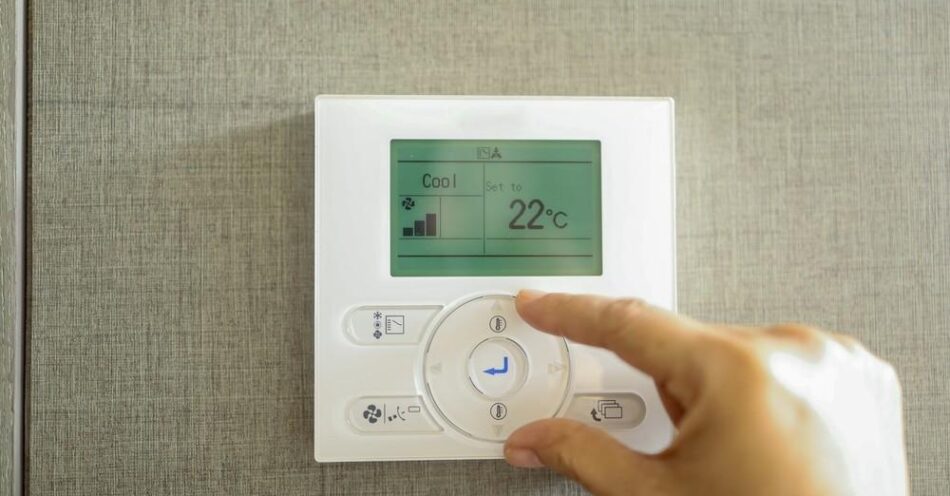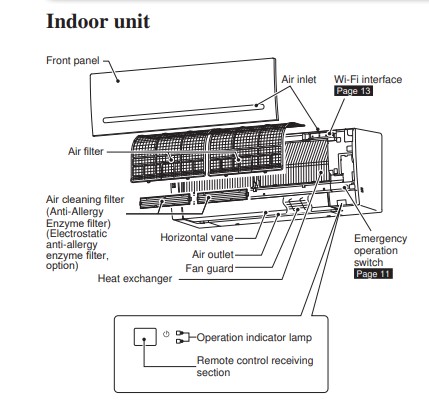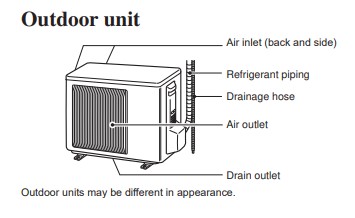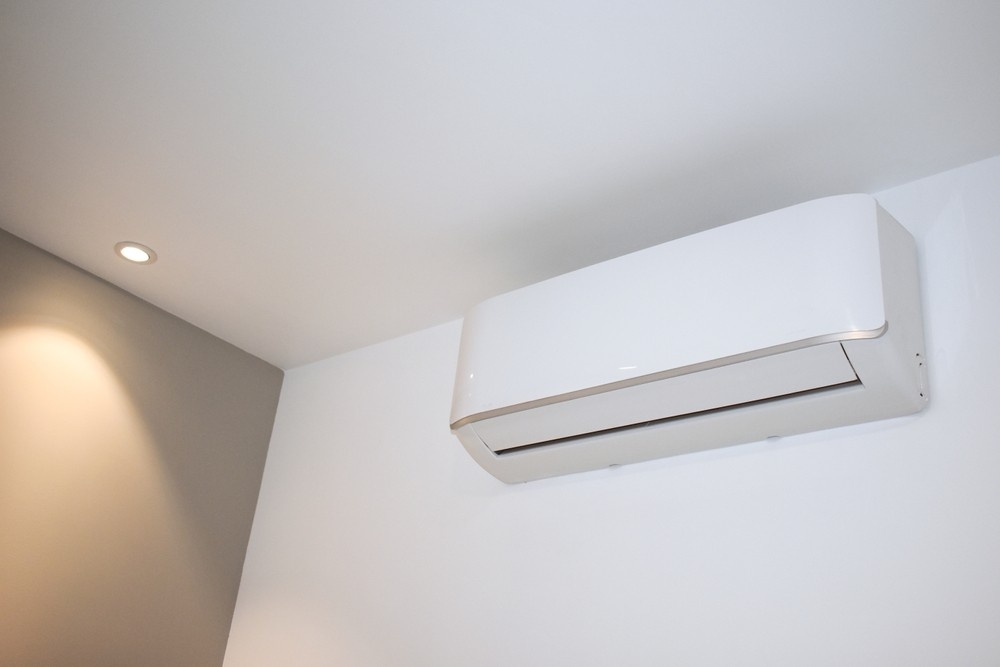
Spring has just started, but that doesn’t mean you’ll stop using your heater! If you’ve switched on your air conditioner’s heating function but nothing warm is coming out, what might the issue be?
If your reverse cycle air conditioner is blowing cold air (even when it’s been set to heat) during winter, this can be a normal process and does not always mean your system has something wrong. But if you’re still concerned about your heater, there are ways to fix it.
This blog will outline why your reverse cycle air conditioner isn’t heating. You want to stay comfortable at all times, after all!

Firstly, let’s take a look at how a reverse cycle AC works. Reverse cycle air conditioners use a heat pump method to change air temperature through a process of heat exchange, and in heat mode, the outdoor unit extracts heat from the air outside and brings it into your home. Even in cold weather, a reverse cycle unit still absorbs heat.
The outdoor unit draws in air from outside and passes it over a set of coils; these coils contain a refrigerant that absorbs heat in temperatures as low as -15℃.

Once this heat is absorbed, the refrigerant flows into the indoor unit, where it releases the heat, warming the air inside your home. This cooler air is pushed back outside, completing the cycle. If you have a split system reverse cycle AC, the warm air will come from the wall unit.
For a ducted reverse cycle, your heating unit will distribute air through your ducted work and vents. This process is reversed in cooling mode, with the AC drawing heat from the inside of your home and releasing it outside.
So, why is it not heating?
If the air outside is already freezing cold and the air around the refrigerant coil is getting colder thanks to any warm air being pushed inside, there is a chance this coil could freeze up with ice. This is detrimental to the unit as ice blocks the airflow and can lead to major damage to the unit.
A reverse cycle system will detect that the temperature of the outdoor coil has dropped to freezing temperatures, and the unit will kick into a short de-ice cycle to stop the unit from icing over.
So, how do you stop this? Usually, cold air coming through the vents is due to the internal fan now turning off during the de-ice mode, so some of this cold air accidentally ends up being blown through the ducts. This is easily fixed by ensuring your indoor fan setting is set to auto and not at a constant running speed.
When in auto mode, the unit will know it’s running the de-ice sequence and will stop the fan so the cold air does not get blown in through the indoor ducts. In this case, it’s a good idea to check the status of your indoor fan setting.
However, if you’re still experiencing cold air through your vents, there might be a problem with the indoor coil temperature setting, and you may need an HVAC technician.
Are you struggling to change the system controls or set the temperature? Check the temperature you’ve set it on and turn it up a notch to see if there’s any temperature difference.
What do you do if it’s broken? If you’re using a digital thermostat, a simple fix is to replace the batteries. If this still doesn’t do the trick, you can try to reset it to factory settings. For a Mitsubishi model, for example, you can read their user manual to learn more.
Additionally, if your AC isn’t on the right setting, it won’t heat your home. Make sure that you check your thermostat or remote control to see if the heat setting is on. Some AC units don’t heat automatically unless your indoor temperature is low, so keep this in mind.
Read our blog on how Mitsubishi reverse cycle heating and cooling systems stand out in performance.

The air conditioner isn’t the right size for your room. When you first decide on an air conditioner for your space, it’s important to figure out if it’s even going to heat your space to begin with. The larger the space, the more power you’ll need to heat.
Check out the Sustainability Victoria website for more information on what AC is best for different spaces.
Air filters keep the air in your property clean, capturing dirt, dust and other small particles your AC accumulates. As these become more clogged, the compressor or other parts of your unit can stop working, meaning no hot air!
These filters need to be replaced at least once a year and cleaned regularly to ensure the air flowing through the aircon system stays free of dust and debris. You don’t want your air conditioner blowing out dust and giving you allergies, either.
Blocked air filters can also cause other components in the air conditioner to fail prematurely and cause it to not heat properly. Thankfully, cleaning your air filters is easy; you can wipe them clean or rinse them under running water. Filters should only be reinstalled after they have fully dried.
Filters are installed within the unit for wall-mounted, floor console, and cassette-type units. For duct units, the filter is installed in a return air grille located somewhere on the ceiling.
This buildup can occur due to poor ventilation, poor maintenance, or age, and the outdoor unit keeps to keep itself warm to support heat exchange efficiency. Since it is outdoors, it is exposed to freezing weather in winter. Ice buildups are more common if your unit is in a tight space with restricted airflow.
How do you fix this? You can turn it off and let the ice defrost, as some units have an automatic defrost mode. When installing your unit, make sure it has plenty of space (especially where the fan is).
If mould is growing in your system, this can get in the way of it functioning the way it should. Mould causes blockages in your unit and stops the airflow. How do you avoid mould from building up?
Change your air filters every 3 months at least, or get your ducts checked and cleaned by a HVAC professional at least once a year.
Read: Can Reverse Cycle Heating Really Save You Money in Winter?
A reverse cycle system (and heating) requires electricity to run, so a tripped circuit breaker or blown fuse can prevent the AC from heating. Older properties are more likely to encounter this as other appliances share a circuit with the AC.
How do you fix this? If the circuit breaker was tripped, try resetting it and turning off other appliances on the same circuit. Repeated tripping indicates a fault with your AC, though, so leave the more complex (and dangerous) electrical problems to a licensed and trained professional, such as at Aust Climate.
The compressor changes the refrigerant from a cool and low-pressure liquid to a hot, high-pressure gas, so this could play a part in your AC not heating.
And if you are servicing your air conditioning unit on schedule, a faulty compressor shouldn’t be a problem, as they can last up to 15 years. If you think this is the culprit, you will need a trained professional due to technical handling.
If you’re looking around for air conditioning repairs in Toorak, Bentleigh, Bayswater, Rowville, Keysborough, Blackburn, Yarra Glen, Mooroolbark, Balwyn, Caulfield, Templestowe, or anywhere across Melbourne, Aust Climate has over 25 years of experience in business.
Has your heater or air conditioner broken down, stopped working or become too expensive to run and maintain? Australian Climate Systems offers quick on-site servicing by one of our qualified technicians. For gas ducted heating, split systems, ducted reverse cycle heating and cooling, electric heating and cooling, multi head split systems, or add-on cooling, Australian Climate Systems are experts in HVAC. Our locally owned and run business specialises in the sale, installation, service, repair and maintenance of heating and cooling solutions.
You’ll be in good hands from start to finish with our team. Our professionals offer excellent service, generous workmanship guarantees and much more.
Contact us on 03 9726 4444 or email admin@austclimate.com.au for an online quote or to learn more about our New Season Products.